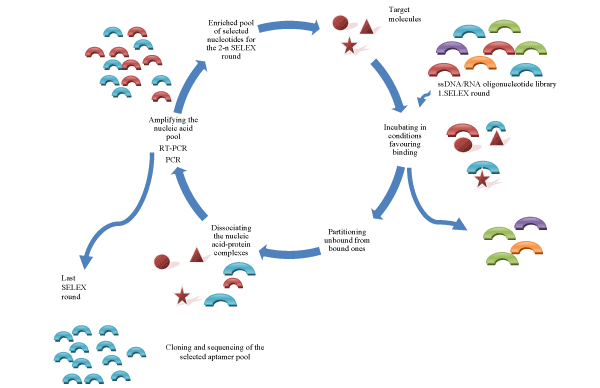
The initial step of the SELEX procedure is the synthesis of a single-stranded nucleic acid (RNA/DNA) library of large sequence complexity (typical length is 20 to 100 nucleotides flanked by two constant primer regions with primer sites for PCR amplification ) followed by a selection of oligonucleotides, which are capable of binding with high affinity and specificity to target molecules. The next steps of the SELEX procedures are: (a) incubating the aptamer library with a target molecule such as a recombinant protein in conditions favouring binding, (b) partitioning unbound nucleic acids from specifically bound ones to the target molecule, (c) dissociating the nucleic acid-protein complexes and (d) amplifying the nucleic acid pool enriched with sequences that allow binding to selected target molecules. The new generated nucleic acid pool serves as a starting library for a new SELEX cycle composed of identical steps as the first round. The number of SELEX repetition depends on the library type used and on specific enrichment achieved per a selection cycle. After the last round of aptamer selection, the PCR products are cloned and sequenced.